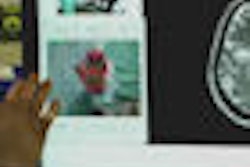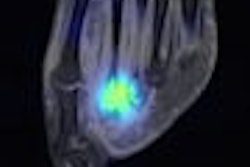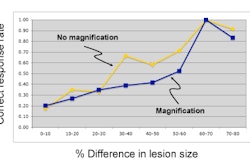Researchers from Spain have developed software that analyzes PACS data to automatically perform quality control analysis of retake rates of computed radiography (CR) studies. They believe their QC tool could make it easier for imaging facilities to reduce retakes and improve the overall quality of service.
Greater attention is being paid to retake rates as a means of lowering radiation dose to patients and enhancing hospital efficiency. But despite radiology's shift to digital imaging, few automated tools exist for performing retake analysis, according to the research team, led by Carlos Prieto and colleagues from San Carlos University Hospital and Complutense University, both in Madrid. Their paper was published online in July in the Journal of Digital Imaging.
San Carlos researchers developed a software tool called QConline that analyzes retake rates using data in the DICOM header of CR images stored in the facility's PACS archive. QConline uses a set of criteria that might indicate that an image is a retake, such as two or more images with the same patient ID, modality, description, projection, and date.
To verify the accuracy of the criteria, Prieto and colleagues used QConline to analyze a set of CR images (3,742 abdomen and 8,636 chest) archived over a period of three months and compared the tool's performance to that of four independent radiologists reviewing the same images. In this initial test, QConline overestimated retake rates, suggesting that 15.4% of abdominal and 4.5% of chest exams were rejects.
The researchers found that QConline was classifying some legitimate images as retakes. For example, some procedures conducted on large patients used two exposures, in landscape and portrait orientations, because a single orientation could not cover the area of interest.
To further refine the algorithm, the researchers added additional criteria to it, which lowered its estimate of CR retake rates to 6.6% for abdominal studies and 1.9% for chest images. The panel of radiologists concluded that the actual retake rates for the facility during the study period were 3.3% for abdominal and 0.9% for chest, respectively.
There were several reasons for the higher retake rate produced by QConline, according to the researchers. One reason was that many images were not repeats but instead had incorrect information in the DICOM header, such as a wrong patient ID, study, or projection -- this was a factor in 30% of the chest images and 80% of the abdominal images. Also, many retake "false alarms" were chest images taken at inspiration and exhalation, while dual-exposure images of large patients continued to be a problem.
Of the actual retakes, further analysis found that 50% of chest images and 65% of abdominal images were rejected due to poor patient positioning. Other factors that contributed to rejected images were artifacts such as jewelry and belts appearing in the x-ray beam, patient movement, and image processing errors such as data corruption during the digitization or archiving process.
Inadequate imaging parameters also contributed to some rejected images, although the researchers noted that CR's wider dynamic range and the ability to postprocess digital images enabled radiographers to salvage many images that might have been rejected in a film-screen environment.
The researchers proffered several suggestions for reducing QConline's false-alarm rate, such as proper identification of images (particularly lateral abdominal images) and the inclusion of a comment field in the DICOM header to indicate whether repeated chest images were taken at inspiration and exhalation.
According to the researchers, their pilot study indicates that it's feasible to implement an automated tool for analyzing CR retakes. The concept could also be expanded to flat-panel digital radiography systems as well, they wrote, and vendors could incorporate tools similar to QConline into their PACS software.
Data collected by tools like QConline can be used to help a facility analyze the quality of its service and identify areas where staff training and education can help reduce retake rates. For example, retake rates could vary based on weekend, evening, or day shift, they noted.
"To assure a high-quality service, service levels need to be measured within the clinical environment, and a potential measurement tool is image retake analysis," they wrote. "Retake analysis in a modern imaging department can be used to identify areas where improvement of service quality and cost-effectiveness is needed."
By Brian Casey
AuntMinnie.com staff writer
August 5, 2008
Related Reading
Digital x-ray lowers retake rates in study from Pakistan, June 30, 2008
Global radiation dose higher than necessary, June 3, 2008
Study examines reasons for CR image rejections, May 12, 2008
Prevention key for reducing CR, DR image artifacts, December 25, 2007
Studies examine digital methods for reducing pediatric x-ray dose, October 9, 2007
Copyright © 2008 AuntMinnie.com



















